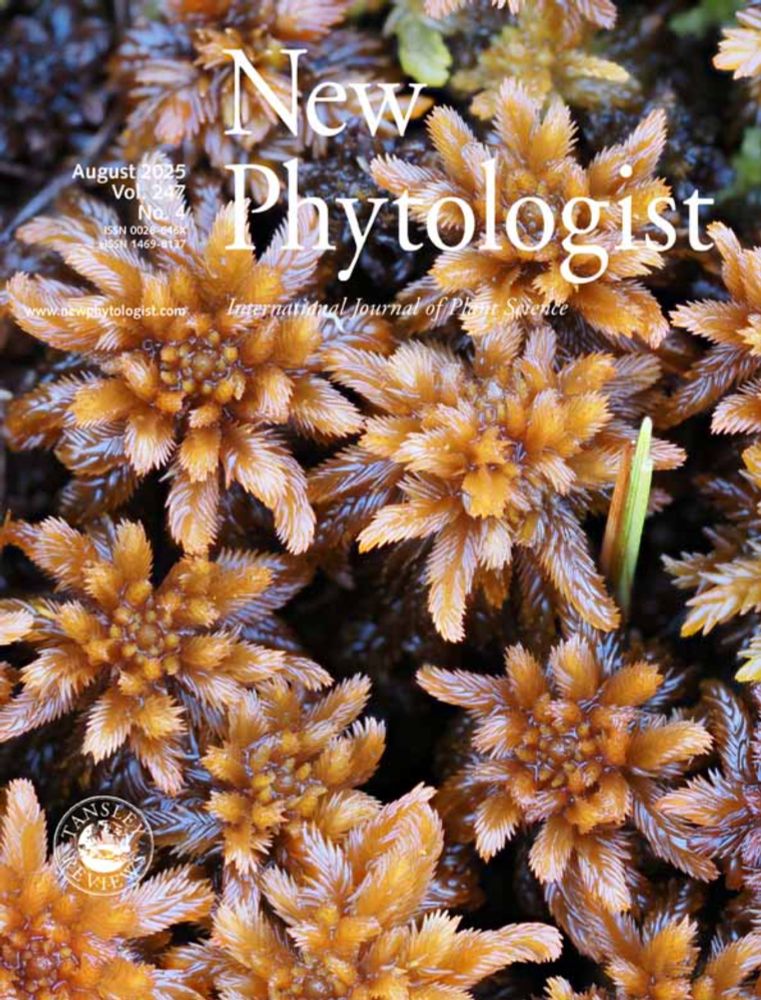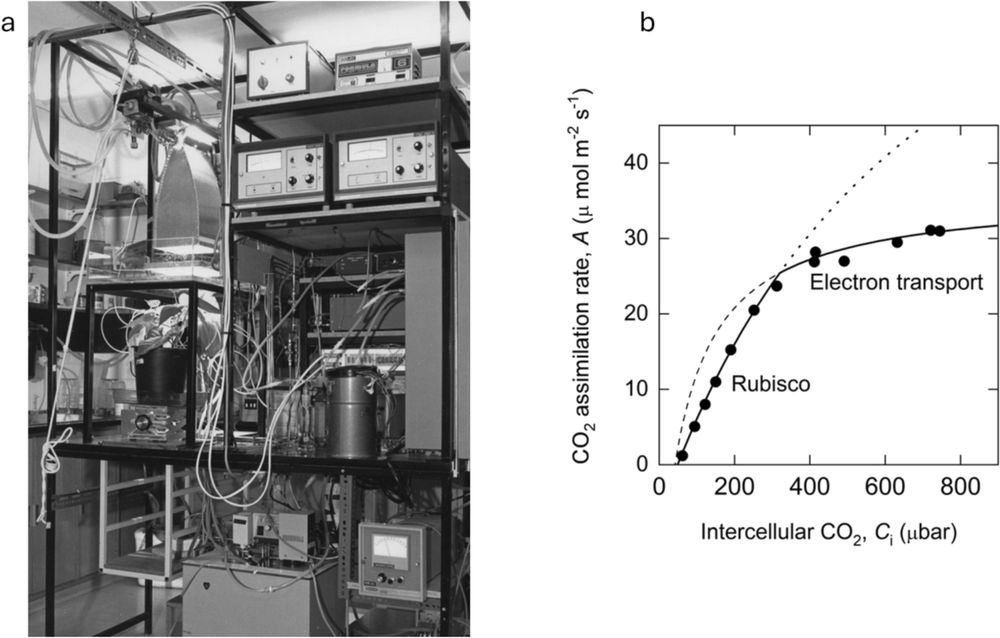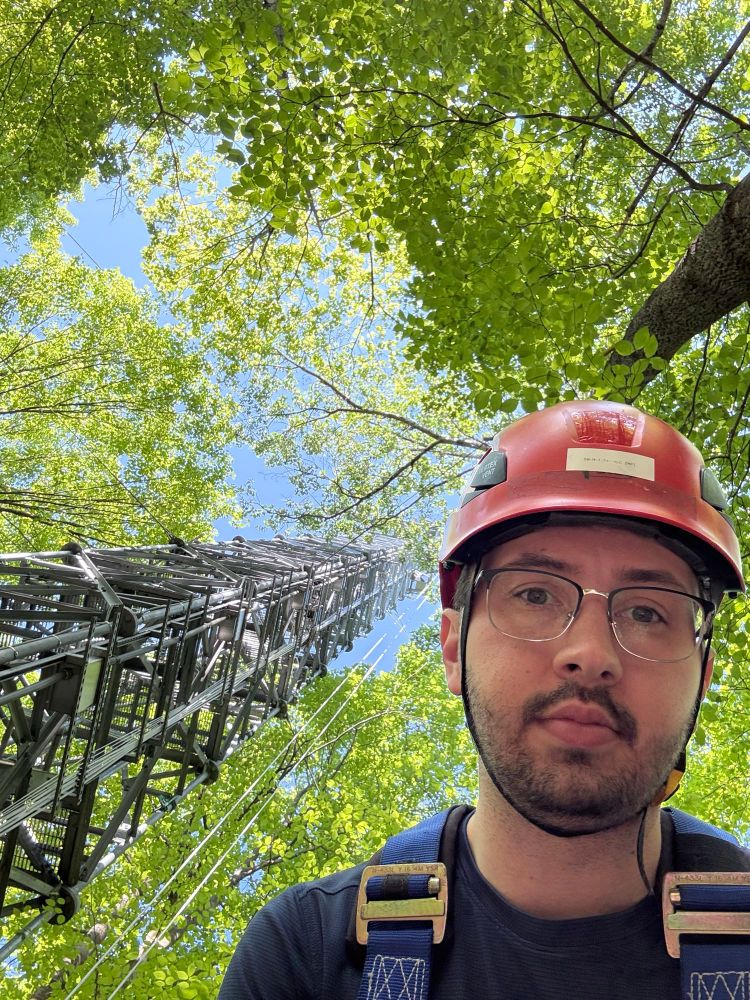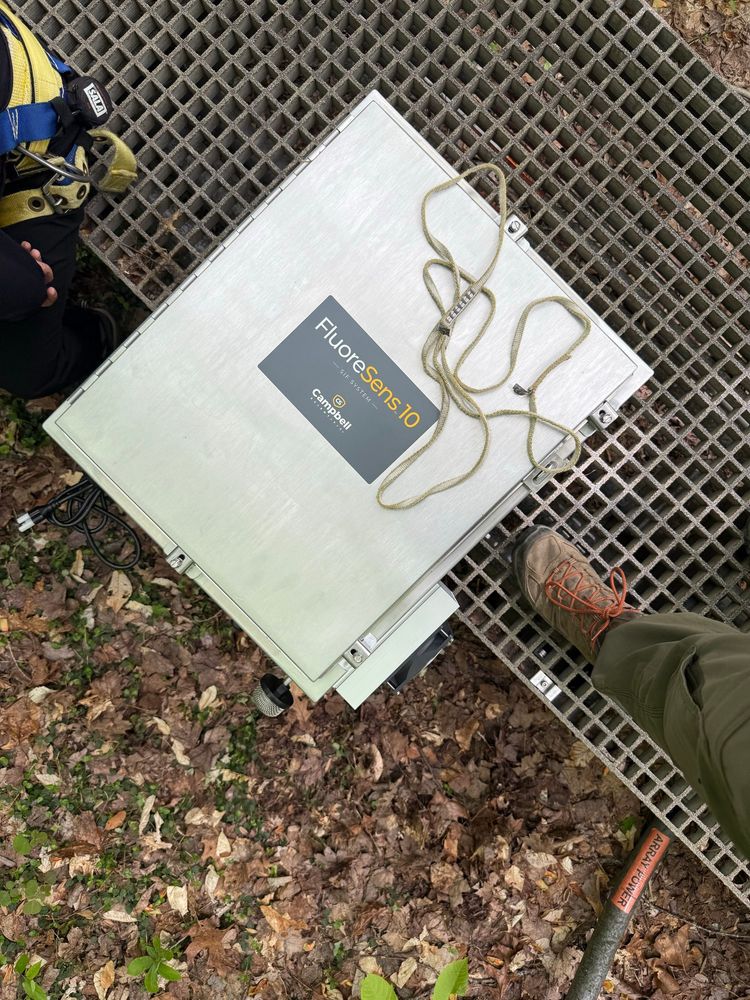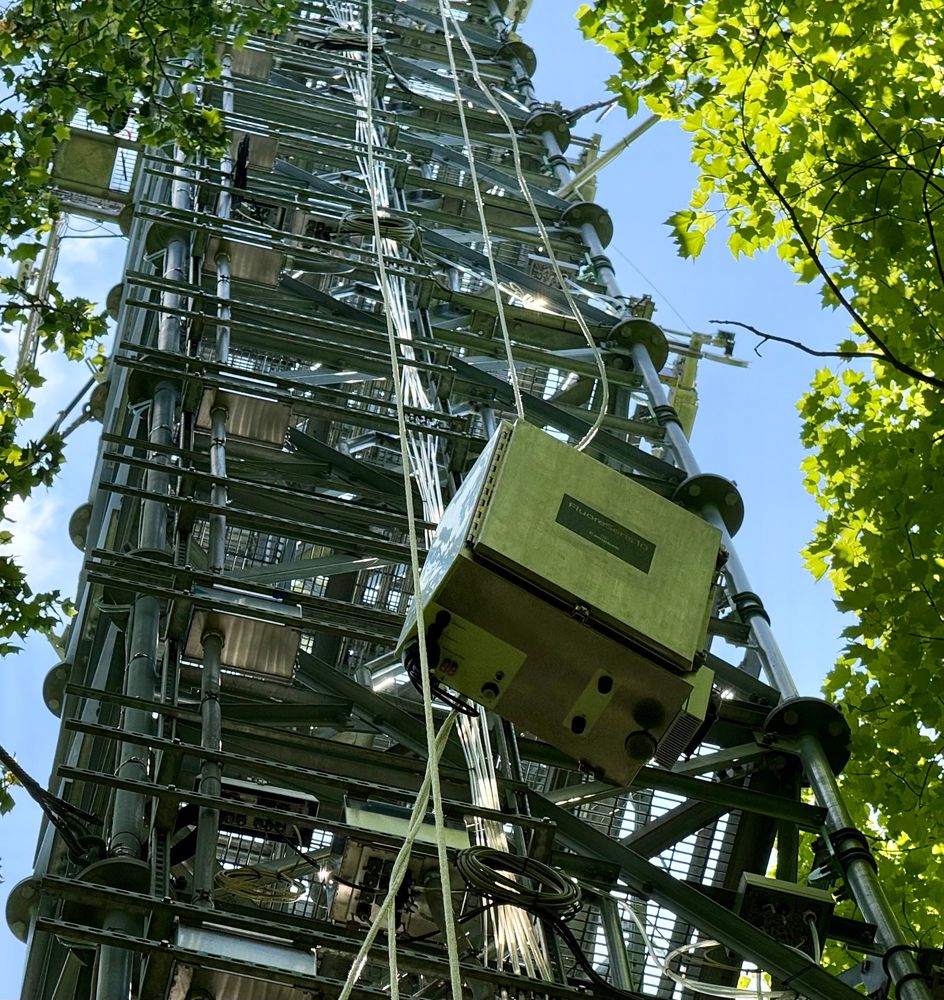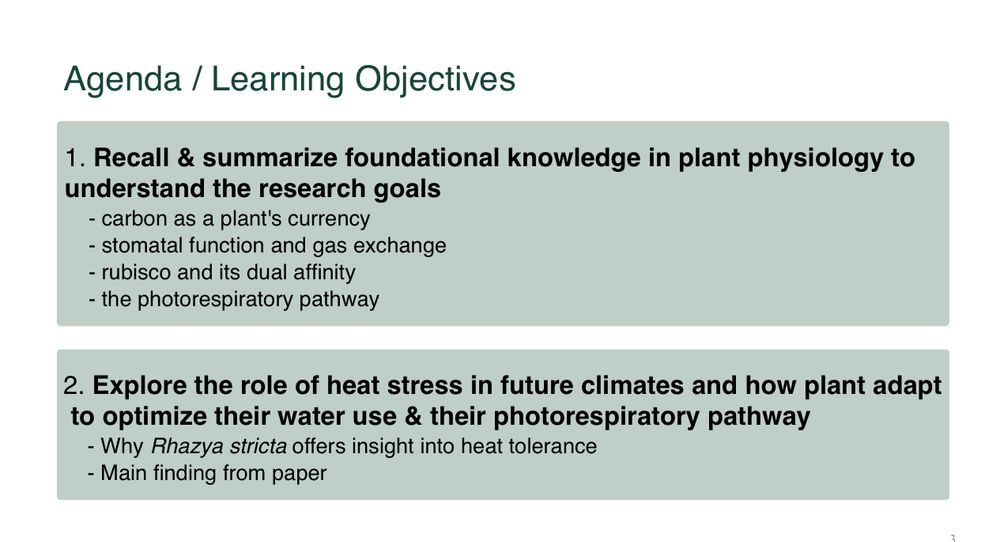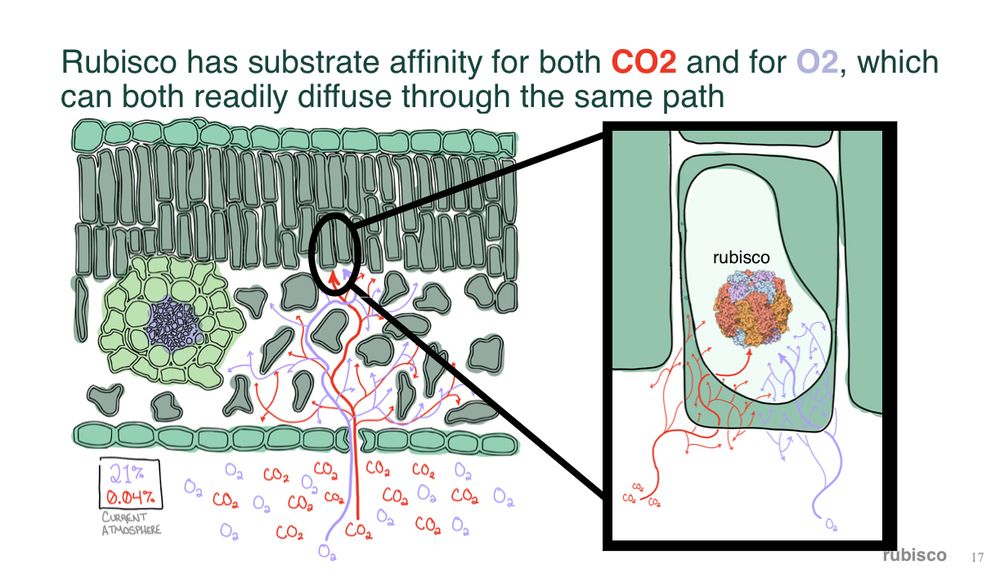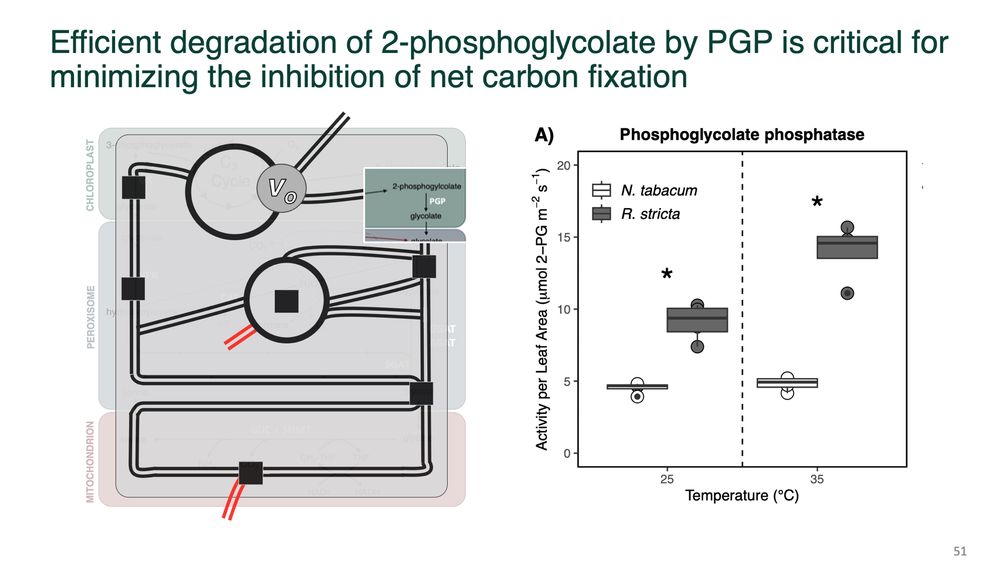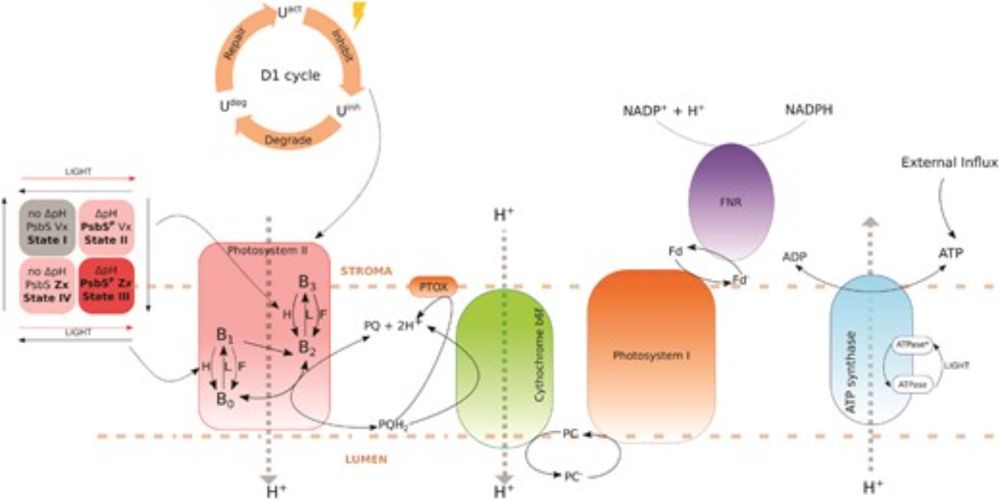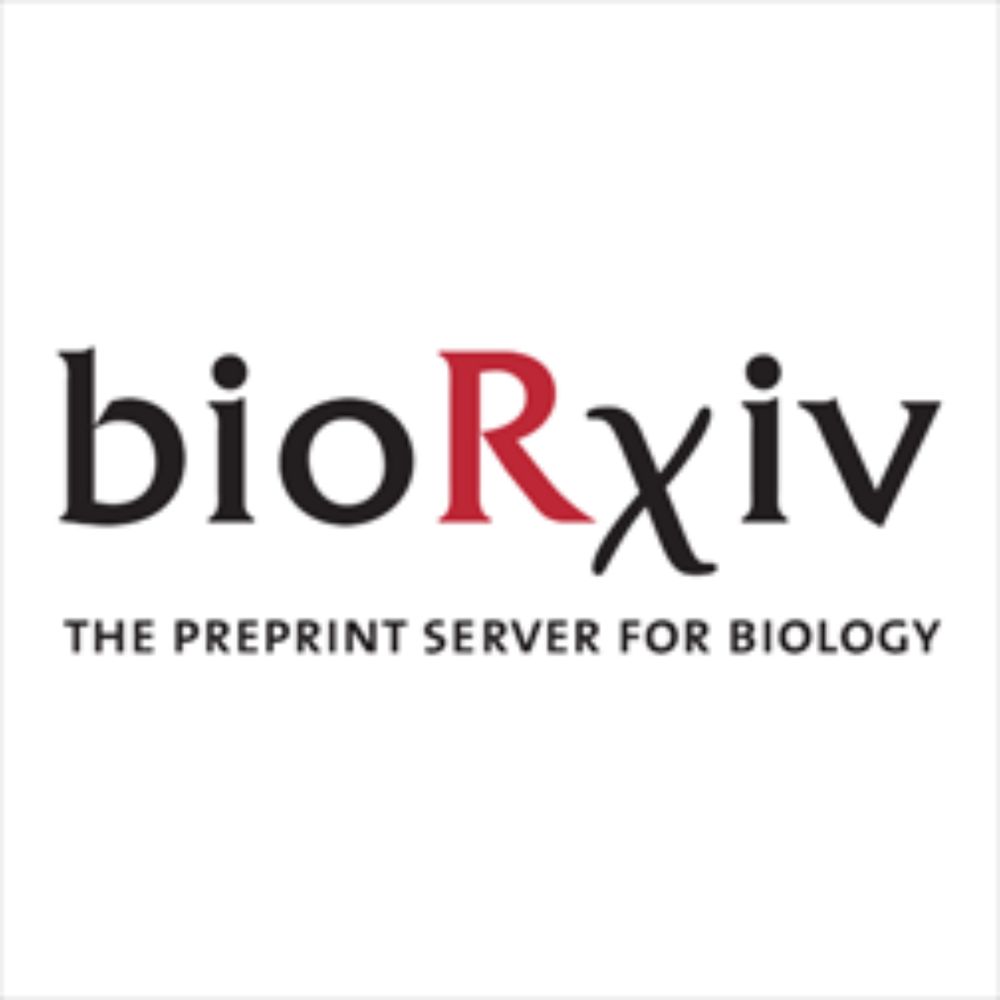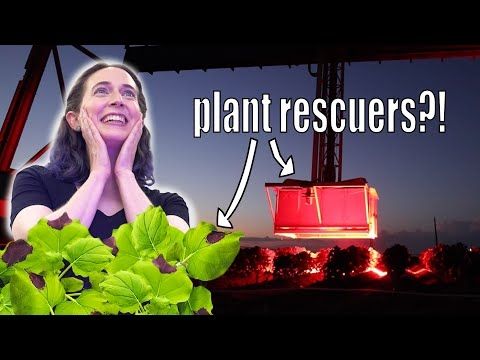Best part about a land-grant university will forever be the ice cream from our own dairy
25.07.2025 19:39 — 👍 583 🔁 36 💬 50 📌 60
Postdoctoral researcher on methods in photosynthesis
You will work towards developing and validating new spectroscopic methodology to enable high resolution photosynthetic measurements both in the field and in the lab. You will work closely with a team ...
An excellent job opportunity in the Netherlands for a postdoc interested in biological kinetic spectrofluorimetry & spectrophotometry. You'll be helping development new spectroscopic techniques for measuring photosynthetic energy transduction. #plantsciencejobs #plantscience
24.07.2025 16:53 — 👍 1 🔁 6 💬 0 📌 0
A chlorophyll fluorescence-based biofeedback system was developed to adjust LED intensity based on real-time plant responses, rather than using a fixed photosynthetic photon flux density (PPFD). The system was tested in a growth chamber with lettuce and cucumber.
Read more https://bit.ly/3G8kmoS
16.07.2025 11:35 — 👍 1 🔁 2 💬 0 📌 0
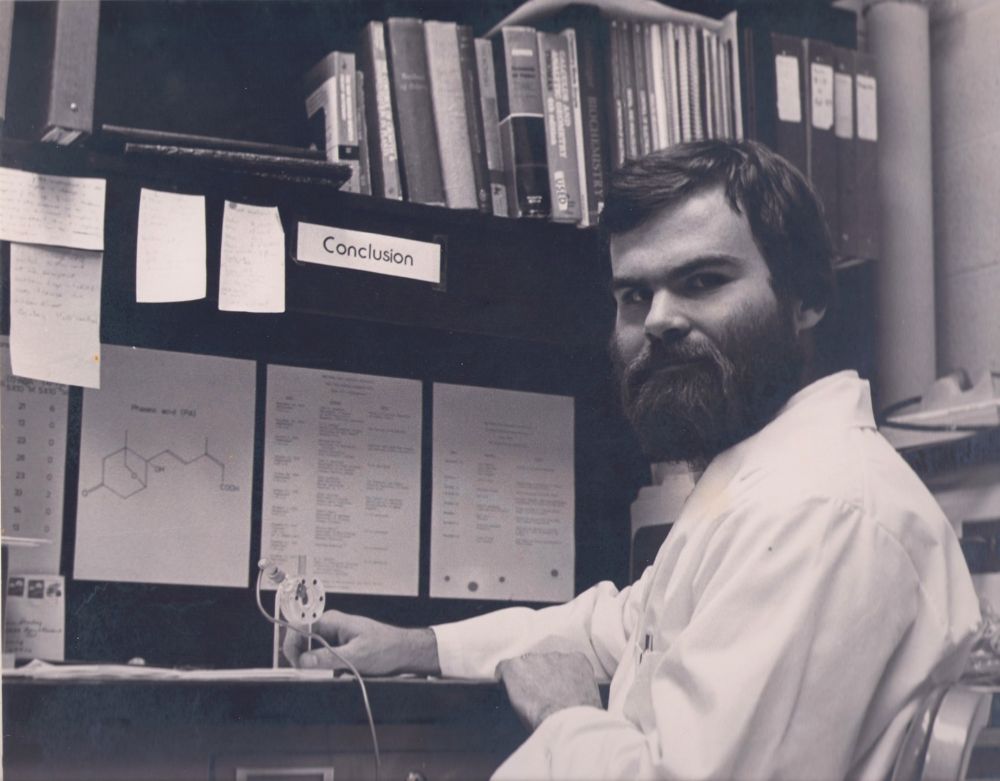
Tom Sharkey poses at his desk as a graduate student in the MSU-DOE Plant Research Laboratory between 1976-1980.
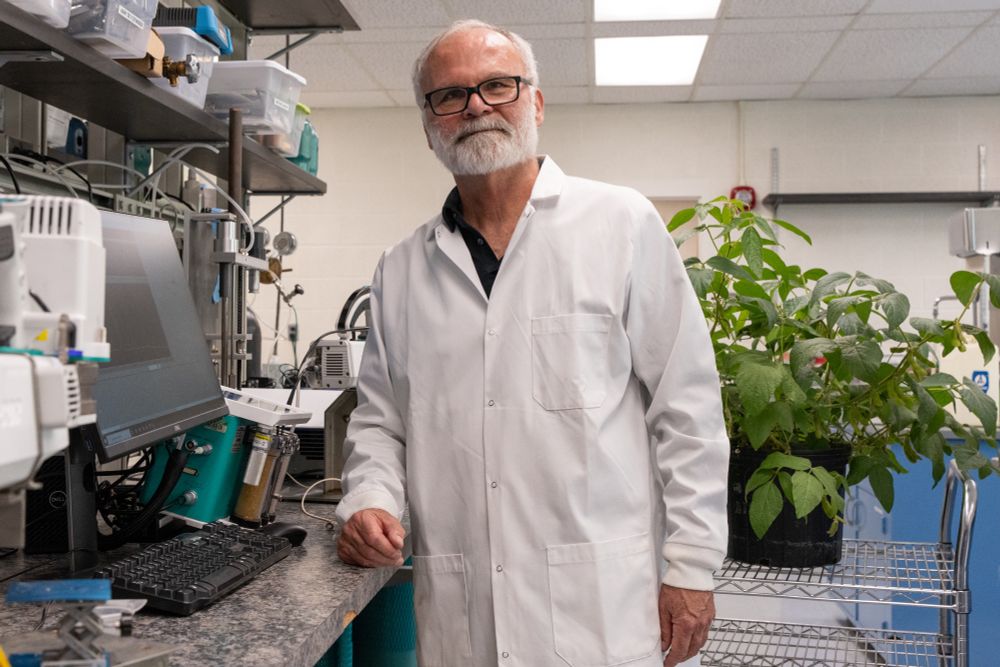
Tom Sharkey poses in a lab coat in front of a plant and computer in his lab.

Tom Sharkey and former lab member, Sarathi Weraduwage, examine a piece of equipment.
After 51 years, Thomas Sharkey is earning the title of Emeritus University Distinguished Professor as he heads to retirement. From pioneering photosynthesis research to mentoring future leaders, his impact is immeasurable. Read about his impactful #plantscience career: natsci.msu.edu/news/2025/20...
08.07.2025 16:05 — 👍 13 🔁 7 💬 0 📌 0
Congratulations!
27.06.2025 21:43 — 👍 1 🔁 0 💬 0 📌 0
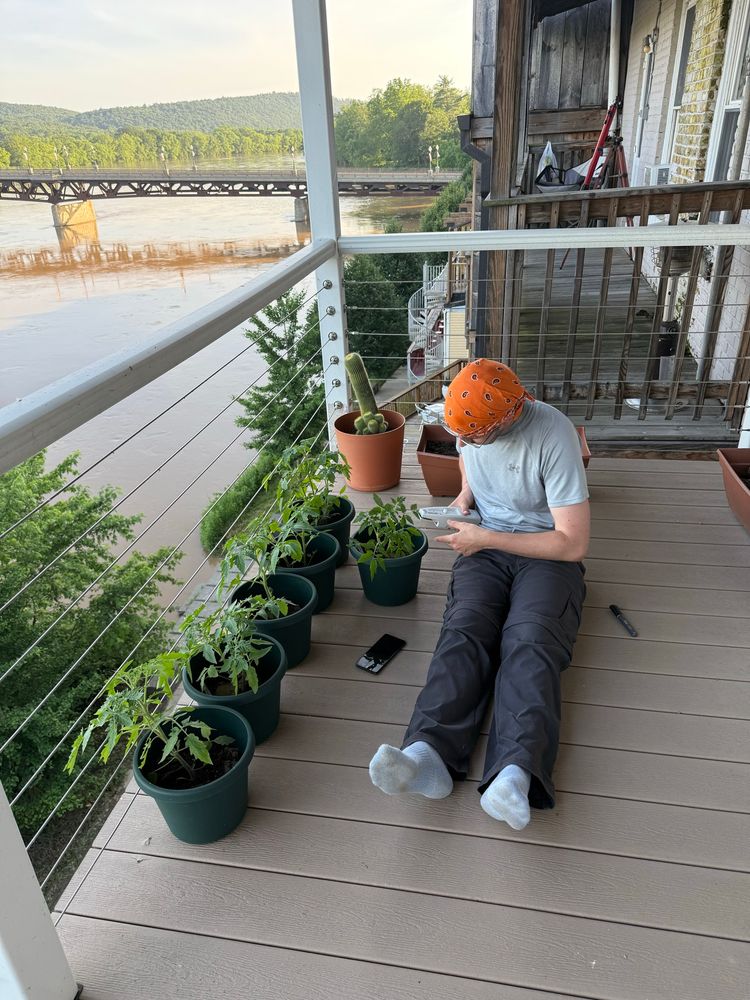
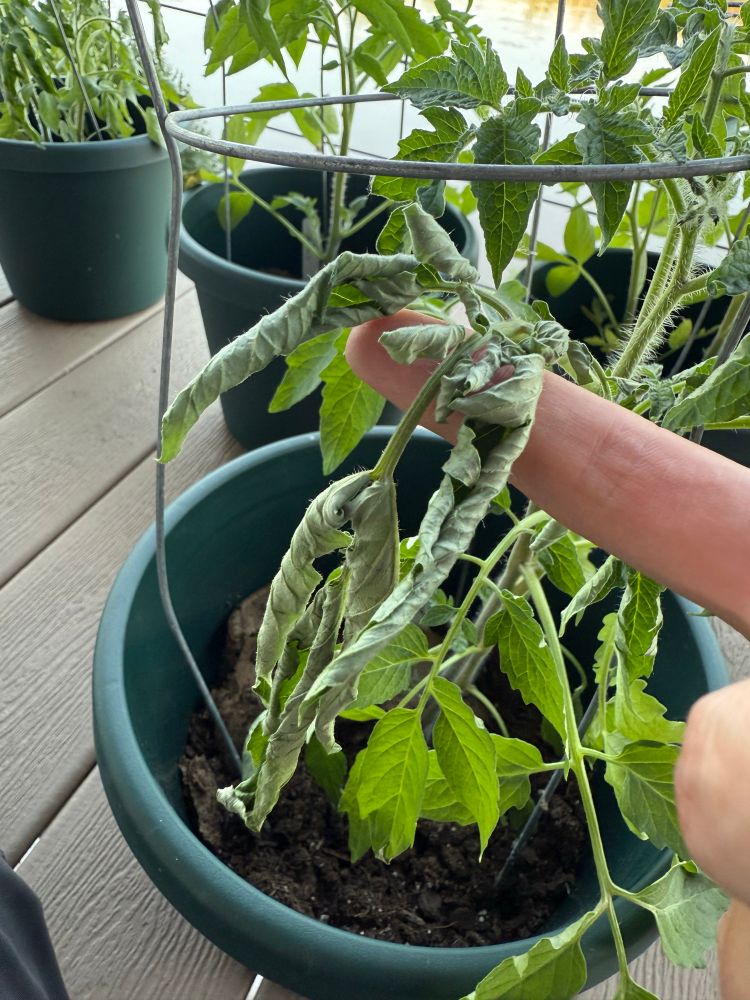
Taking Chl a fluorescence measurements of my tomato plants all this week through the heat wave in NY (the conditions have been brutal for them today).
Will report out at the end of the week
25.06.2025 00:03 — 👍 3 🔁 0 💬 0 📌 0
Looks like burdock to me. I think that the 1) hooked burrs can cause discomfort if they get entangled in fur & 2) burdock contain lactones which can cause dermatitis on skin/or irritate digestion if eaten. But personally I would not consider it toxic
22.06.2025 13:48 — 👍 1 🔁 0 💬 1 📌 0
Go green! Congratulations!
21.06.2025 16:43 — 👍 2 🔁 0 💬 0 📌 0
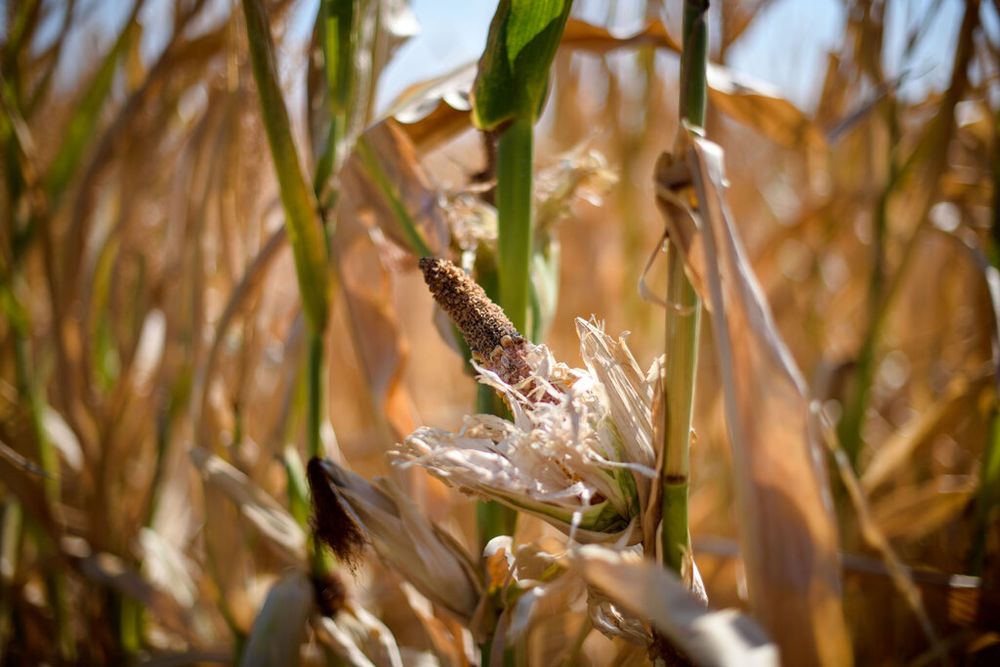
Soaring Temperatures Threaten Crops, So Scientists Are Looking to Alter the Plants
Great article by the New York Times:
Soaring Temperatures Threaten Crops, So Scientists Are Looking to Alter the Plants www.nytimes.com/2025/06/12/c...
17.06.2025 10:00 — 👍 1 🔁 0 💬 0 📌 0

Text reads: 'life is more than machinery and genetic information'.
#Viewpoint: Bring back the #phenotype
César Marín & Michael J. Wade 👇
📖 nph.onlinelibrary.wiley.com/doi/10.1111/...
#LatestIssue #PlantScience
04.06.2025 13:31 — 👍 16 🔁 6 💬 0 📌 0
Unfortunately, I know a few REU programs that have also been terminated as well and offers are currently being receded. Super upsetting :(
13.05.2025 15:28 — 👍 1 🔁 0 💬 0 📌 0
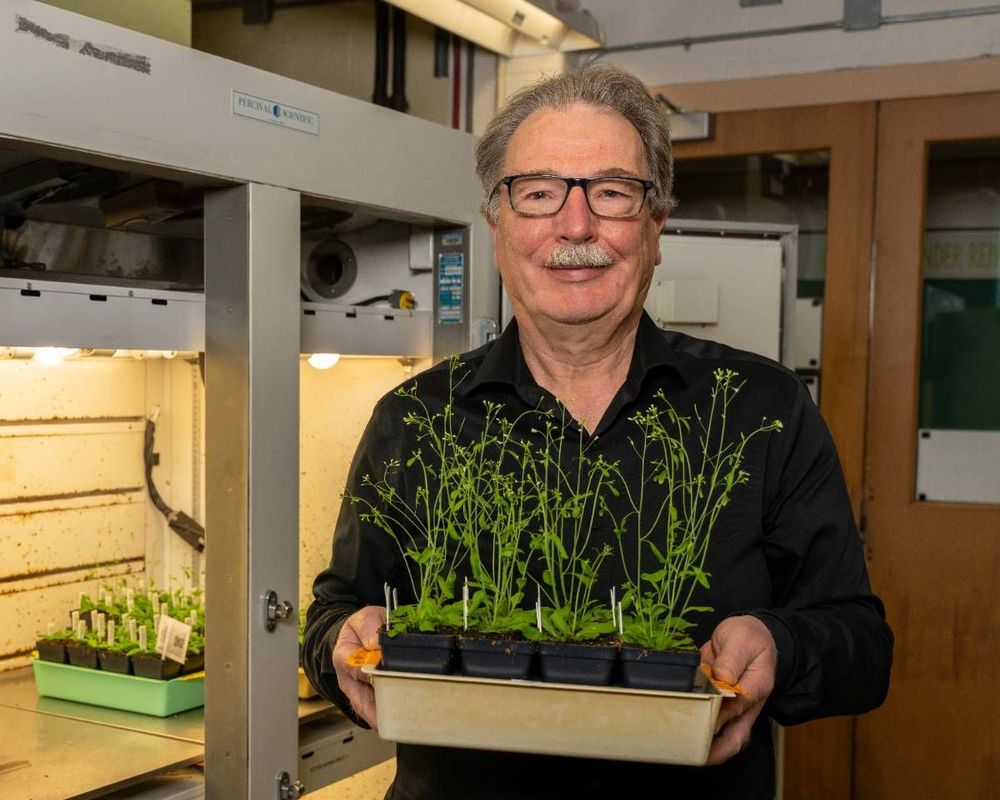
Christoph Benning elected to National Academy of Sciences
Christoph Benning, Michigan State University researcher, inventor and one of the world's foremost experts in plant lipid metabolism, has been elected to the National Academy of Sciences.
Congratulations to Christoph Benning on his election to the National Academy of Sciences! Benning is the director of the Plant Research Laboratory, whose 40 year career has made him one of the world's foremost experts in plant lipid metabolism. natsci.msu.edu/news/2025/20...
08.05.2025 20:30 — 👍 2 🔁 2 💬 0 📌 0
“I spend so much time on TikTok,” she said. “Hours and hours, until my eyes start hurting, which makes it hard to plan and do my schoolwork. With ChatGPT, I can write an essay in two hours that normally takes 12.”
"No work, no play" sounds like an incredibly rewarding college experience.
07.05.2025 12:16 — 👍 884 🔁 177 💬 68 📌 22
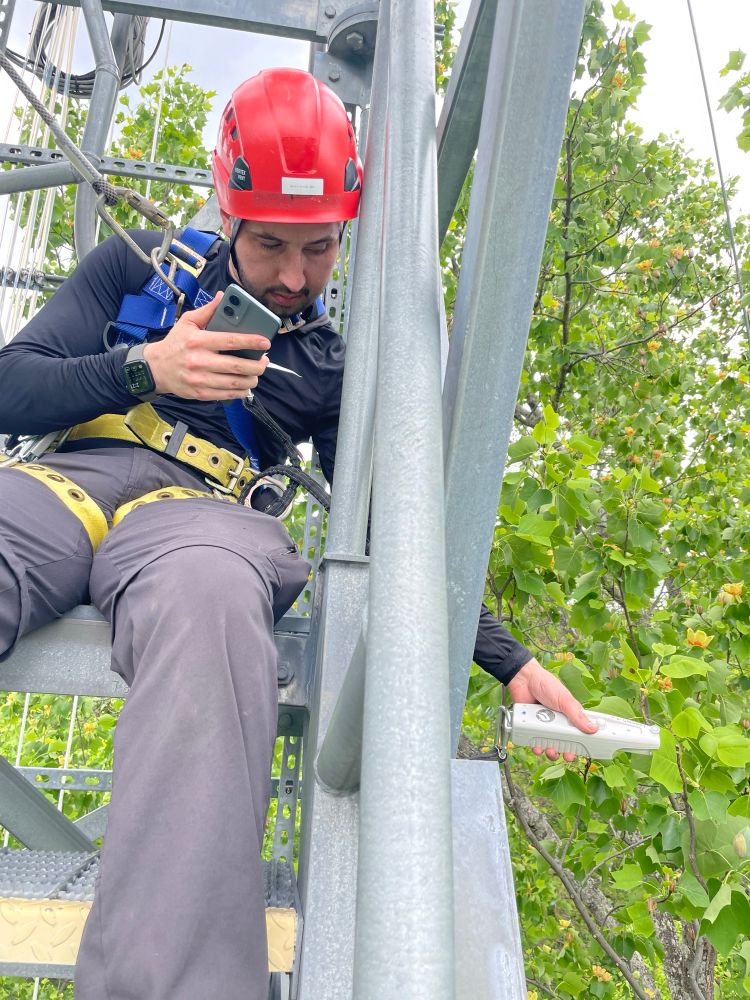
My “backyard” has expanded to Eastern Tennessee
30.04.2025 00:33 — 👍 0 🔁 0 💬 1 📌 0
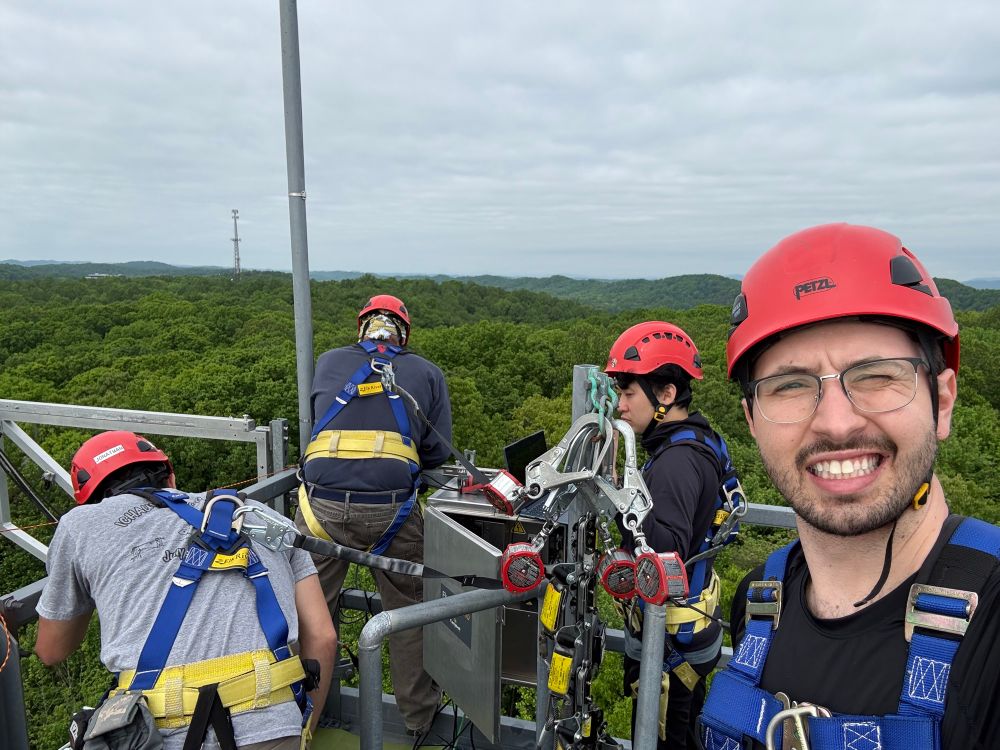
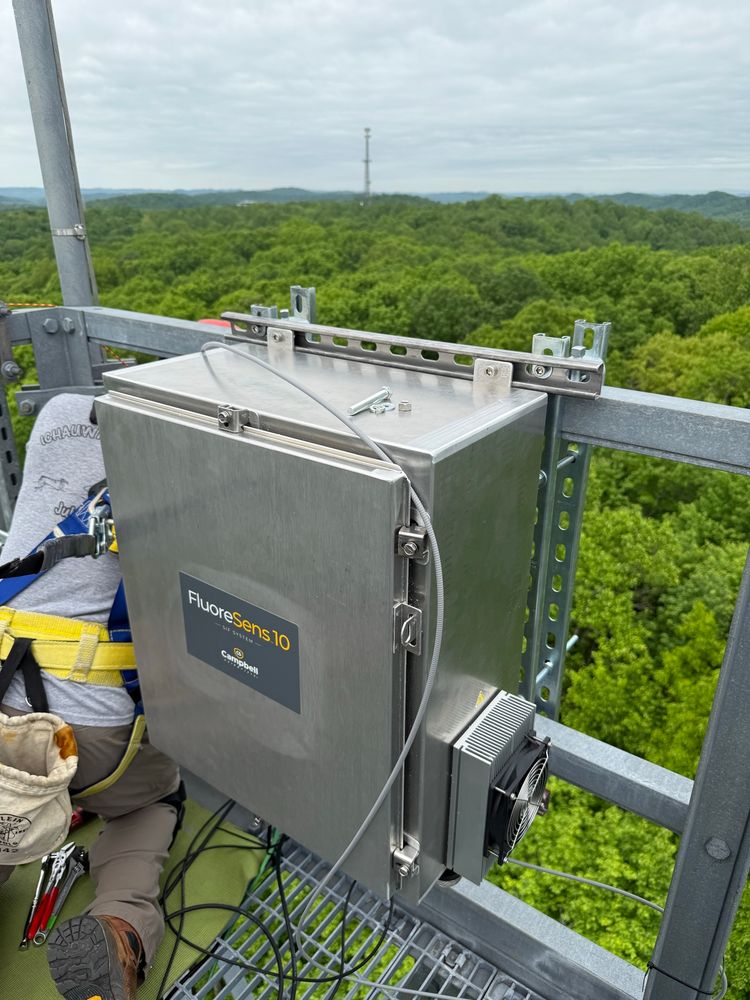
Day 2 of the SIF Tower installation at ORNL (3 more sites to go)
30.04.2025 00:08 — 👍 0 🔁 0 💬 0 📌 0
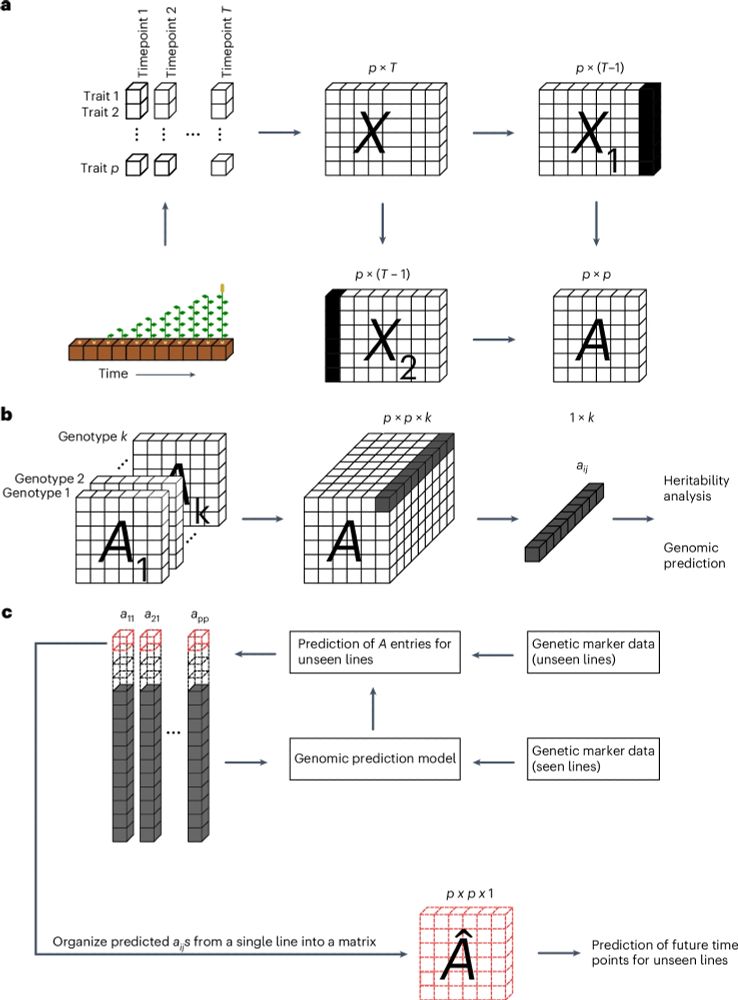
New OA Article: "Predicting plant trait dynamics from genetic markers" rdcu.be/eia5V
Time-resolved multi-trait data from a high-throughput phenotyping platform for the genomic prediction of morphometric, geometric and colourimetric traits of Arabido and maize lines.
17.04.2025 15:15 — 👍 5 🔁 1 💬 0 📌 0

A deficient CP24 allele defines variation for dynamic non-photochemical quenching and photosystem II efficiency in maize
High throughput phenotyping of a maize multi-founder mapping population reveals genetic factors controlling dynamic photoprotection and photosystem II effi
Happy to share the publication of our recent work on the identification of CP24 as a determinant of variation in NPQ and PSII efficiency in maize 🌽☀️.
This paper involved a massive team effort in the lab and collaboration with colleagues at @essexuni.bsky.social 🧬🧪
tinyurl.com/yn7hwjyk
07.04.2025 13:37 — 👍 9 🔁 4 💬 0 📌 1
James and I overlapped for a bit at PRL. He’s not only a great researcher but also an excellent person to work with. If you’re interested in studying heat sensitivity in horticultural crops (and using lots of fun instruments to do it) - this would be a great opportunity for you!
05.03.2025 18:34 — 👍 3 🔁 3 💬 1 📌 0
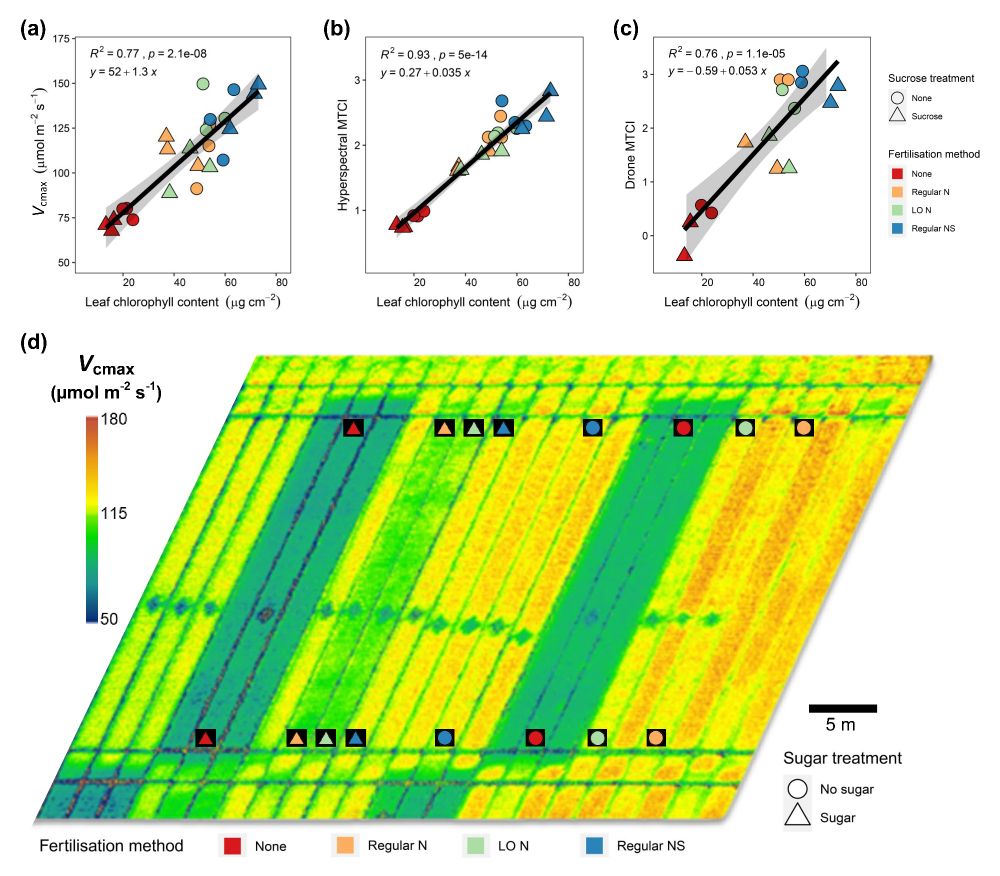
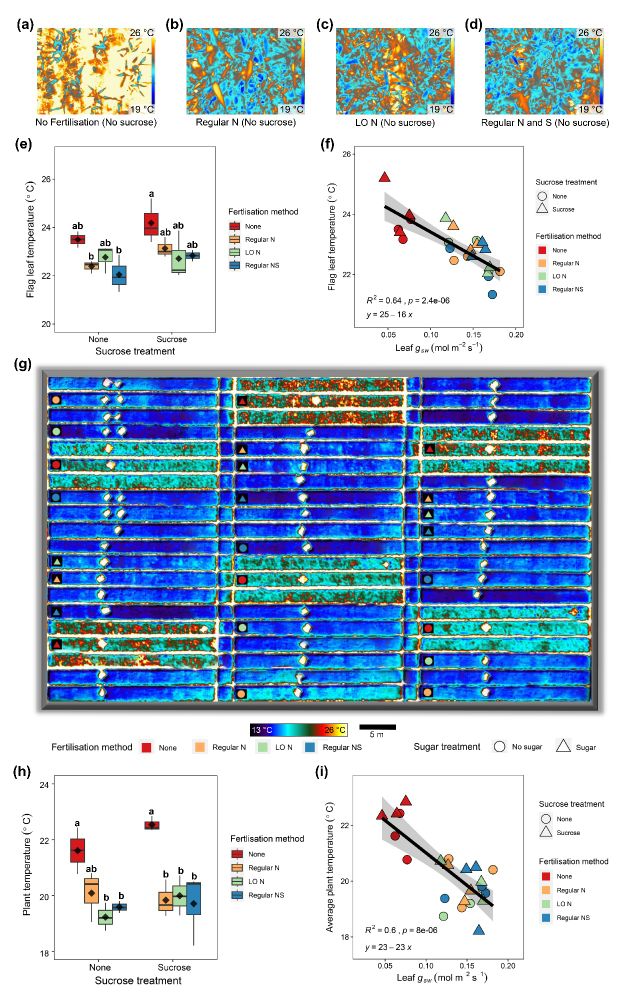
Really glad to finally share this work. The first research conducted with @drhollycroft.bsky.social, in collaboration with ADAS UK. We used #optical and #thermal data from #drones together with ground measurements to map #wheat🌾 traits and fluxes. @sheffieldpps.bsky.social
doi.org/10.1101/2025...
25.02.2025 16:38 — 👍 1 🔁 3 💬 1 📌 0

The determination of leaf size on the basis of developmental traits - Zeqing Ma, Thomas N. Buckley, Lawren Sack - New Phytologist @tombuckleylab.bsky.social
t.co/EFgmQo1qWy
25.02.2025 06:38 — 👍 16 🔁 10 💬 0 📌 0
Congratulations James - this is the best news I’ve heard all week!
31.01.2025 21:42 — 👍 1 🔁 0 💬 1 📌 0
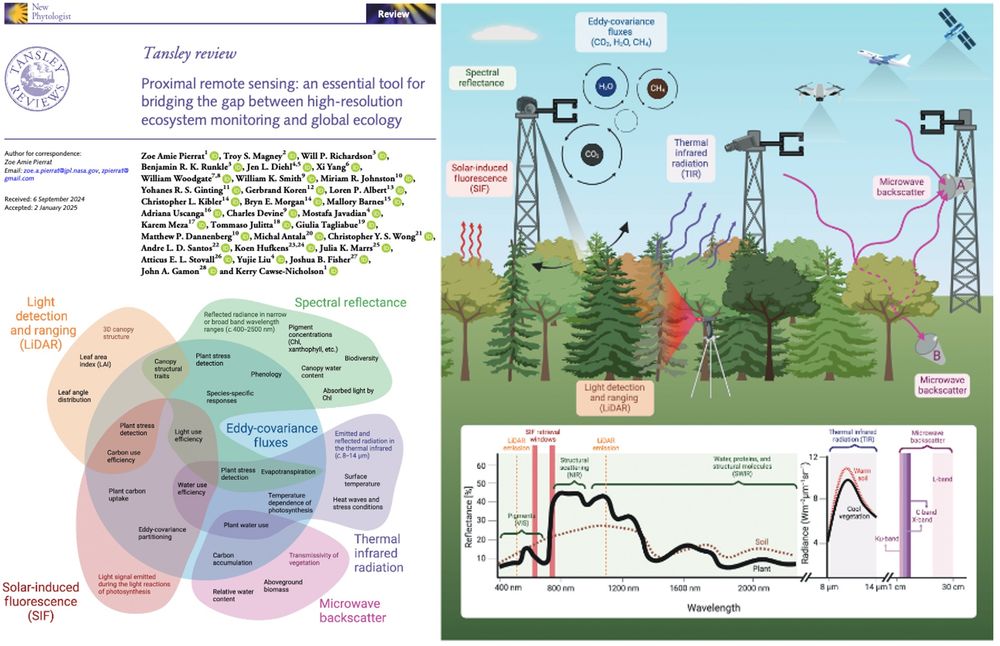
Overview of proximal remote sensing instruments at a flux tower site. Shown are three eddy-covariance towers with sonic anemometers collecting data to derive ecosystem fluxes. Shown for spectral reflectance and solar-induced fluorescence (SIF) is a hyperspectral sensor with a narrow field-of-view (FOV) and multi-directional scanning capabilities (Sections II.1 and II.2). We also show the direct emission of SIF from the forest canopy (Section II.2). For thermal infrared radiation, we show a fixed thermal camera and thermal radiation coming from the canopy (Section II.3). For microwave, we show two potential arrangements with antenna A receiving direct signals from under open-sky conditions as well as signals that are reflected from the underlying vegetated surface, and antenna B receiving a direct signal that is propagated downward through the vegetation canopy and attenuated by its moisture content (Section II.4). We also show a light detection and ranging (LiDAR) instrument emitting light to get a 3D representation of canopy structure (Section II.5). Above the forest are a drone, aircraft, and satellite to emphasize the potential of proximal remote sensing to complement observations across scales. In the inset plot, we show sample reflectance spectra for vegetation and wet soil and highlight key wavelength ranges for spectral reflectance. We also show typical SIF retrieval windows and LiDAR emission windows. Next to the reflectance spectra, we show sample radiance in the thermal infrared region, with example spectra for warm soil and cool vegetation. Finally, we show key measurement wavelength bands for microwave backscatter.
New Tansley review paper from Zoe Pierrat & friends in @newphyt.bsky.social linking proximal remote sensing with ecosystem fluxes!
Synergies and best practices for hyperspectral reflectance, SIF, thermal, microwave and lidar 🌈🌲🗼🛰️🧪
nph.onlinelibrary.wiley.com/doi/10.1111/...
23.01.2025 18:23 — 👍 65 🔁 29 💬 1 📌 3
YouTube video by Science IRL
How a giant robot & red light can save plants from climate change
Just released a new Science IRL ep! Scientists at CROPPS are using giant robots & genetic light switches to help plants be more resilient in the face of climate change. It gives me hope to see researchers doing this sort of work, especially now:
youtu.be/EJfKeySYWm4?...
🧪 #plantscience #scicomm
14.01.2025 21:11 — 👍 46 🔁 19 💬 1 📌 0
Thanks!
10.01.2025 21:47 — 👍 0 🔁 0 💬 1 📌 0
Professor studying plants, ecosystems, and climate change. Passionate about my small but diverse farm, guitar, and travel.
Postdoc @Kromdijk lab, Cambridge investigating peatland vegetation under thermal stress using spectroscopy.
DPhil @Oxford, studying leaf spectroscopy, forests, and ozone pollution.
PhD student in Tree Ecophysiology at WSL & ETHZ 🇨🇭
Biology student in Leipzig, living somewhere in between Marburg, Turku and Leipzig, interested in Ecology, Conservation/Restoration; and evolutionary approaches to eco questions ;)
The PRI facilitates interdisciplinary #plantscience at Michigan State University. 🌱 We're tackling the challenge of improving plant resilience in a changing world. Learn more: plantresilience.msu.edu
🇨🇴 Biologist | plant science | ecophysiology | thermal thresholds | statistics | climate change.
Currently at Alliance Bioversity & CIAT, Colombia, researching low methane forages emissions (Data analysis).
~Restore our souls to restore our planet.
Forest ecologist, plant demographer, dendrochronologist. Assoc. Professor at the University of Arizona, Laboratory of Tree-Ring Research - views are my own. Scientist at the intersection of the climate and biodiversity crises. Mom, dancer, gardener, cook.
(She/Her)Brazilian ecologist, Phd student ~ MPEG |Tropical forests, plant - water relations and hydraulics| Amazônia💚|
Forget princess, I'm a scientist
Postdoctoral researcher at TU Dresden |
Tree ecophysiology | Forest ecology | Ecohydrology
Plant Ecophysiologist: Plant Hydraulics, Water Relations, Drought, Mortality-🔬Research Scientist @IRNAS_CSIC - 👨💼Ex-president @SIEF_SCEF - de Sanlúcar
Plant ecophysiologist working on tree mortality in the face of climate change/drought and hotter-drought. 🌲🌳🌡️
Post-doc at #Ecophyslab in Gainesville, FL. |
Soon to be Researcher at #INRAE France 🇫🇷 |Fulbright 21/22 | she/her
Ecophysiologist investigating plant responses to heat and drought 🌡️💦🌲 at the University of Utah 🇺🇸
From 🇧🇷
Plants | Ecosystems | Energy
Postdoc at Cornell University - DNRE
Senior Research Officer at @thepallavisinghlab.bsky.social | Ecophysiology & molecular biology | C4 & C3 photosynthesis | Alternative crops🌾 & abiotic stresses 🏜️🌡️
https://linktr.ee/martinezgonixs
The Australian Society of Plant Scientists (ASPS) promotes #PlantScience in Australia, and provides professional contact within our community #ASPS2025 #ozplants
https://www.asps.org.au/
Prof: Plant Bio and Crop Sci at Uni of Illinois Urbana-Champaign.
Director: Center for Advanced Bioenergy and Bioproducts Innovation
Transdisciplinary research on stomata, WUE, roots, AI, phenotyping, drought, biomass and food crop production, bioeconomy
climate scientist, bicycle cavalry in the war on cars
climate scientist || documenting and predicting climate impacts || professor @dartmouth
https://geography.dartmouth.edu/people/justin-s-mankin
https://jsmankin.github.io/
assistant professor at UIUC plant bio. evolution and ecology of resurrection plants in southern Africa
